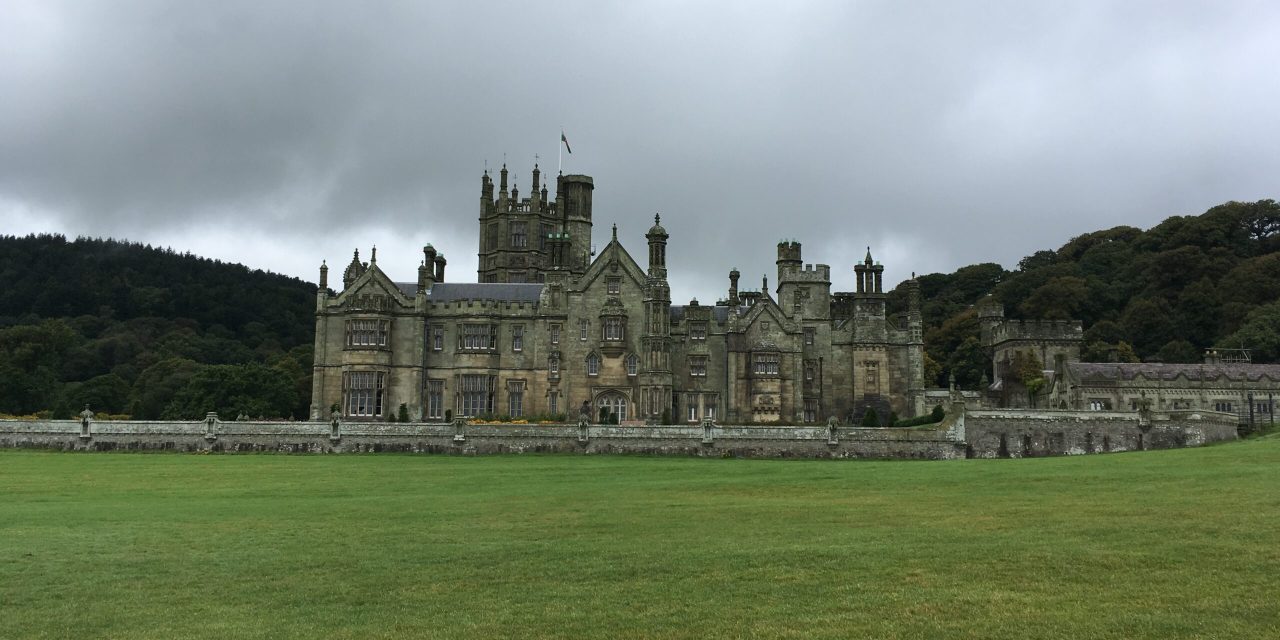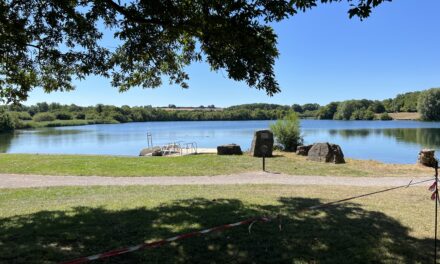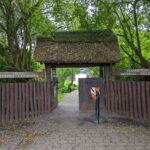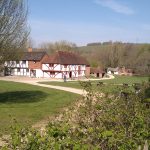If you live in South Wales or are planning a trip to the area and are looking for places to go, you should add Margam Park to the list. Margam Park is a country park estate that is full of history, wildlife, and natural beauty. There is pretty much something for everyone at Margam Park, and there is so much here to see and do.
In this article, we are going to tell you everything that you need to know about what you can expect from a visit to Margam Park. We are going to provide you with all the information that is required to start planning your journey and exploring all of the different things that you can do at the park.
What to expect from our article
- 0.1 Where is Margam Park?
- 0.2 When Does Margam Park Open?
- 0.3 How Much Does Margam Park Cost?
- 0.4 Is it Free to Park in Margam Park?
- 0.5 Is Margam Castle Open to the Public?
- 0.6 Can Dogs Go to Margam Park?
- 0.7 Is Margam Park Pram Friendly?
- 0.8 Is Margam Castle Medieval?
- 0.9 How Many Acres is Margam Park?
- 0.10 What Animals Are At Margam Park?
- 0.11 The History of Margam
- 0.12 Who Owned Margam House?
- 0.13 Margam Castle
- 0.14 The Gardens
- 0.15 The Orangery
- 1 Fairytale Land
Where is Margam Park?
Margam Park can be located in Margam, which is in Port Talbot, South Wales. The postcode for Margam Park is SA13 2TJ.
When Does Margam Park Open?
Margam Park opens at 10am, and it is open every single day of the week. The park closes at 4.30pm, and last admission is at 3.30pm. It is also worth being aware that the busiest arrival times are between 10.30am and 12.30am. If you have a park membership, you will have the opportunity to enter the park an hour earlier, at 9am.
How Much Does Margam Park Cost?
Entry to Margam Park is completely free, but you should know that you do have to pay for parking.
Is it Free to Park in Margam Park?
No, it is not free to park at Margam Park, and parking charges do apply. The cost of parking is £6.60 per car, £15.30 per minibus, and £30.60 per coach. Visitors with a valid park membership will be entitled to free parking.
Is Margam Castle Open to the Public?
The entirety of Margam Castle is not open to the public, and you will only be allowed in certain areas. The Entrance Hallway and Staircase Hall are open to the public. However, the
The Library, Dining Room, and Drawing Room are now only used for the purpose of events.
Can Dogs Go to Margam Park?
Yes, you can take your dog with you to Margam Park, but they ‘must be under the control and effectively restrained by the owner’. This is so they do not interfere with visitors or other animals, and they don’t disturb any of the wildlife at the park.
Just in case you forget, there are dog waste bags available from the car park kiosk. You will be able to find dog litter bins in many prominent locations within the park, but it is acceptable to put your dog litter bags in any of the park litter bins. Your dog must be on a lead in the Orangery, Castle Gardens, and Farm Trail, and they will not have access to some of the facilities at the park.
It is asked that you keep your dogs on their leads in the historic deer park, gardens, and farm trail, but there are also some off-lead areas. You can let your dog off the lead, but under close control, from the Castle lawns as far as the farm trail behind the castle.
Is Margam Park Pram Friendly?
Yes, Margam Park is pram-friendly.
Is Margam Castle Medieval?
No, Margam Castle is a 19th century Tudor Gothic Mansion that was actually designed by an architect called Thomas Hopper. The house was built between 1830 and 1840, and it cost £50,000 to build. The material that was used to build Margam Castle was sandstone, which came from a nearby Pyle quarry.
How Many Acres is Margam Park?
Margam Park is 1000 acres of stunning parklands. The park has lots of different things to see and do, and due to the fact that it is so big, you could easily spend the whole day here.
What Animals Are At Margam Park?
Some of the more common mammals that you might be able to see at Margam Park are foxes, badgers, hares, grey squirrels, voles, and shrews. Moles can be found in larger quantities at the lower parts of their park. There is also the famous Margam Deer Herd that roams through roughly 500 acres of parkland here.
Rare Breed Farm Trail
As well as some of the animals that you are likely to see wandering around Margam Park, you can also walk around the rare breed farm trail to see some other animals. You can expect to see Glamorgan cattle, Llanwenog and Badger Face sheep, Welsh pigs, Buff Orpington hens and more. These are just a few of the interesting rare breeds of animals that you can see here.
All of the animals at this location have been chosen traditionally by both local farmers and smallholders for their hardiness and the produce that they provide like milk, fleece, meat, or eggs. Margam Park prides themselves on carefully looking after their stock and ensuring that each type of animal has its own enclosure shelter and food.
Their speciality is the Glamorgan Cattle, which you may even be able to spot in the fields next to the main car park. They can be recognised by their chestnut coloured coat and the broad white stripe that runs along their backbone, down their tails, and under the belly. It was thought that this Glamorgan breed had died out in Britain in the 1920s, but fortunately, a herd was discovered in Sussex in 1979. The entirety of the stock was purchased and brought back to Margam Park to ensure the survival of the breed.
The History of Margam
Margam is an extremely diverse and varied landscape, and within the park, there is a lot of evidence of people living at and using Margam Park for more than 4000 years. There are lots of things that you can learn about this place, which is why it is considered to be a valuable learning resource and a heritage attraction. It has great historical and scenic value, and it features some of the finest architectural treasures in the country.
The large estate can be located in Port Talbot on the narrow coastal plain, and it is set on the southern slopes of Mynydd Margam, which is a largely forested mountain that rises to a height of 349 m. It is one of the major ancient settlements of Glamorgan, and its history can be traced back to prehistoric times. There are lots of Bronze and Iron Age relics from the area, and there is also evidence of Roman and Celtic occupation throughout its history. Interestingly, it is likely that the deer herd was introduced by the Romans.
It has also been a place of religious importance throughout its history. The Norman Abbey that was founded in the mid 12th century was a religious centre of major importance in South Wales until it was destroyed by Henry VII. The remains of the Abbey are extensive. Houses were later built on the site of the Abbey, and all of the surviving buildings form a unique record of the historical and architectural development that took place here.
In the late 18th century, lots of redevelopment work took place, and the area was laid out as the parkland that we see today. The famous Orangery was then built, which is still one of the most unique buildings of its kind in the country.
In the early 19th century, the park was further enhanced even more, and this is the point in time when Margam Castle was built. This Tudor style mansion actually remained in use until the end of the Second World War. However, after this period, the building was not well taken care of and the neglect that took place meant that it fell into a deteriorated condition as time went on.
Margam Park was officially opened to the public in 1977, and since then, more than four million people have visited to enjoy the countryside, gardens, and heritage.
Who Owned Margam House?
The House at Margam Park was originally built for Christopher Rice Mansel Talbot, and the castle and estate remained in the Talbot family until 1942, when it was acquired by a local landowner called Sir David Evans Bevan. In 1974, it was acquired by the county council in a ruinous state. Today, the house is still owned by Neath Port Talbot County Borough Council.
Margam Castle
Margam Castle is a 19th century Tudor Gothic Mansion that began construction in 1830. It is listed as a Grade I building of exceptional quality, and it has great features, like the vast staircase hall and octagonal tower. Henry Fox Talbot of Lacock, the cousin of the original owner, was a pioneer photographer that took one of the earliest photos of the castle, which clearly shows the corner of the south-west façade.
Eventually, the castle landed in the hands of the County Council in poor condition, and a disastrous fire broke out in 1977, gutting the interior of the building. After this, an ambitious restoration programme was started, and they have been very successful so far, with work still ongoing to this day.
The Visitor Centre and park administration can be found in the outbuildings, and while the Entrance Hallway and Staircase Hall are open to the public, the Library, Dining Room, and Drawing Room are now used only for events.
The Gardens
The garden and landscape at Margam Park are listed as Grade I, and are surrounded by beautiful trees, shrubs and flowers, classic and modern planting, lakes, and long vistas that have evolved since medieval times. When the Council acquired the park in 1973, the building and surrounding gardens were derelict, and lots of work has been done to them both over the years.
The Orangery, which has now been refurbished, augments the eclectic collection of buildings on the estate. The Orangery gardens contain various interesting trees and shrubs, including several large Tulip Trees, a Cork Oak, and a very large cut-leaved Beech. The Broadway Steps are surrounded by rhododendron, which were introduced to the park by Frank Kindon-Ward. Close by, you will even be able to spot a Bamboo Collection and Japanese Garden.
The Gardens at Margam Park are being developed more and more as time goes by.
The Orangery
The Orangery at Margam Park was built to house a great collection of orange, lemon, and other citrus trees that the Talbot’s inherited from their Mansel forebears. Nothing is actually known about the origin of these trees, but legend would suggest that they were originally a gift for the crown. Supposedly, as they were being transported, the ship was wrecked on the coast near Margam, and the trees were claimed by the Mansels.
By the mid-eighteenth century, there were around 100 of these citrus trees, and they were housed in several greenhouses at the park. Thomas Mansel Talbot decided to build the Orangery, which was 327 feet in length and accommodated the entire collection.
The Orangery is long and narrow, with a series of twenty-seven tall windows to allow the light to shine through. The plain back wall contained fireplaces, where hot air passed through flues. In the middle of the Orangery, there was a high door that would have been used to transport fully-grown trees into the garden.
The Orangery was constructed using locally sourced sandstone from Thomas Mansel Talbot’s own quarry at Pyle. The building features deeply-worked stone that is contrasted with smooth-faced ashlar. The building process took place between 1786 and 1790, and while the stone, sand, and wood came from Talbot’s own lands, heavy timber, glass, and slate came by sea and were unloaded at the small ports of Newtown, Taibach, and Neath.
When the Glamorgan County Council purchased the estate in 1973, the Orangery was in ruins. Just 4 years later, the restoration of this stunning building had been completed, and it was opened by the Queen in her Silver Jubilee Year. Today, the Orangery provides a wonderful setting along with the gothic style mansion house, and it is used for events for this reason.
Events like weddings, conferences, concerts, and birthday parties take place at the Orangery today.
Fairytale Land
Another place that you will be able to visit in Margam Park in the Fairytale Land, which can be located within the gardens of the Orangery. This area is designed for children aged 10 and under, and it should definitely be on your list of things to do if you are taking children with you.
Fairytale land is open daily from 10am until 5pm in the spring and summer, and between 10am and 3.30pm during the autumn and winter. The houses are also open at weekends and during school holidays. Some of the things that you can find at Fairytale land include:
- A range of miniature houses with Fairytale themes
- Toddler play area
- Aged 6-10 play area
- Picnic area
- Giant chess and draughts
- Willow cathedral and adventure trail
- Adventure Castle
There are various different miniature houses, and all of them will feature a fairytale scene within them. Each house will be based upon a different fairytale, like Snow White and the Seven Dwarfs or Cinderella. You can make your way between the houses, stopping to read the story and look at the scene on display. Some of these houses will even have an upstairs to them, which you can also go and explore.
Within Fairytale Land, there is also a marvellous adventure castle that is designed for children to play in. They can go up and down the stairs and explore the passageways of the castle, creating their own games as they go along.
There is also a playground area that is a decent size and includes things like climbing frames, a tire swing, and more. There is also a separate area with equipment for toddlers and another area for those that are aged between 6 and 10 years old. On the other side of Fairytale Land, you could even stop for a game of giant chess or draughts.
Adventure Playground
If you are taking children between the ages of 6 and 12 with you on your visit, then it might also be worth stopping at the Adventure Playground. This is the perfect way to let your children run off some steam through outdoor play.
You can watch as their imaginations run wild from the minute that they step into the impressive towering castle. They can also adventure through the watchtower tail and head down the tallest slide in the playground if they dare. Within the Adventure Playground, there are more than 40 different exciting play points for your children to explore and create their own fun.
Margam Park Train
At Margam Park, you can take the train through the wonderful historical landscape and enjoy amazing views beside New Pond as the track runs over the dam. You will also be able to enjoy the vista across the lake to the distant Castle and terrace walls as you head to the castle station.
If you were wondering, the Margam Train is a diesel-powered locomotive that runs on a 24″ gauge railway. It contains three covered carriages, and each of them holds 24 people. There are also facilities for wheelchairs to be able to board the train.
During the spring and summer seasons, the train operates every day, including weekends, bank holidays, and school holidays. The train does not operate throughout the autumn and winter seasons. There is a train timetable that you can check to find out what time the train is running on the day of your visit. However, you should note that the train timetable may be altered or cancelled during bad weather or quiet periods.
The prices for the train are as follows:
Adult – £2.60
Child and OAP – £1.35
Family – £7.25
Children that are under the age of 3 will be allowed to ride the train for free. Otherwise, a child ticket is for anyone between the ages of 3 and 18. The family ticket can be used for a maximum of 2 adults and 2 children. All tickets are only valid for a one-way journey.
Wood Vibrations Trail
When you are visiting the park, you can be at one with nature by following the wood vibrations trail, grabbing a stick, and banging out a tune. This trail was actually created with the help of local school children, and it includes a series of giant musical instruments that have been made using fallen trees from within the park.
The trail leads from the car park to the Margam Discovery Centre, and it is part of an exciting Forest Education Initiative (FEI) project called Wood Vibrations. Children from 5 schools in Neath Port Talbot watched a tree being felled, and they proceeded to work with a local green word worker called Scott Blytt Jordens from Dragonfly Creations to create the musical instruments that you can interact with as you walk along the trail.
Go Ape Tree Top Adventure
If you are willing to pay extra for fun activities while you are at Margam Park, then you should definitely check out the Go Ape TreeTop Adventure course. This course offers you an adventurous high rope challenge. This location is even home to the biggest Tarzan Swing in the UK, which is a 6-meter leap of faith that will test your nerve.
You will be able to feel the buildup of excitement and anticipation as you walk past the impressive Margam Castle on your way to the course. It is based on a hilly location, and the views from here are absolutely stunning.
You can hit the high platforms to soak up the beautiful and one of a kind sea view. As Margam Park is home to the largest deer herd in Wales, you will likely be able to see them from various treetop advantage points. This could be the perfect activity for the whole family to enjoy.













